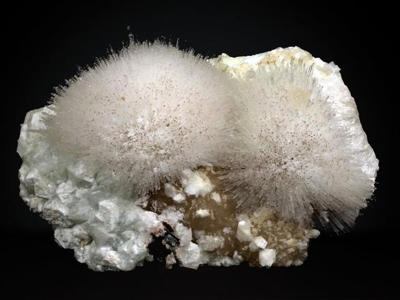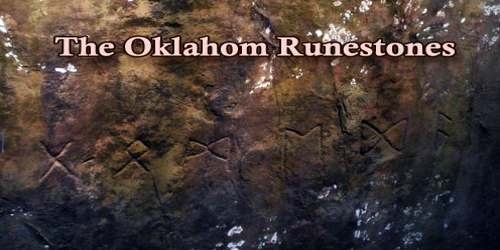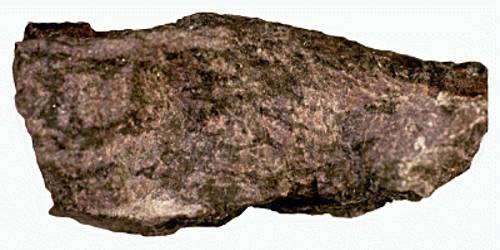Mesolite is a mineral of the zeolite family, similar to natrolite. It is a fragile member of the zeolite group and forms almost exclusively in delicate, needle-like crystal habits. It is a tectosilicate mineral with formula Na2Ca2(Al2Si3O10)3·8H2O. It is a sodium calcium zeolite, is intermediate between natrolite, a sodium zeolite, and scolecite, a calcium zeolite. It is a member of the zeolite group and is closely related to natrolite which it also resembles in appearance. It is a popular zeolite mineral for mineral collectors and zeolite collectors in particular.
Mesolite has many localities but only a few have large crystal specimens or large masses. It occurs in volcanic rock cavities, typically found in basalt but also in andesite, porphyrite, and hydrothermal veins.
General Information
- Category: Tectosilicate Zeolite
- Formula: (repeating unit) Na2Ca2(Al2Si3O10)3·8H2O
- Crystal system: Orthorhombic
- Crystal class: Pyramidal (mm2) (same H-M symbol)
- Color Colorless, white, gray, yellowish-brown

Properties
Mesolite crystallizes in the orthorhombic system and typically forms fibrous, acicular prismatic crystals or masses. Radiating sprays of needle-like crystals are not uncommon. It is vitreous in luster and clear to white in color. It has a Mohs hardness of 5 to 5.5 and low specific gravity of 2.2 to 2.4. The refractive indices are nα=1.505 nβ=1.505 nγ=1.506.
- Crystal habit: As elongated prismatic crystals, commonly in hairlike tufts and aggregates of fibers; radiating compact masses; stalactitic; porcelaneous
- Twinning: Characteristically twinned on {010} or {100}
- Cleavage: Perfect on {110} and {110}
- Fracture: Uneven
- Tenacity: Brittle, masses tough
- Mohs scale hardness: 5
- Luster: Vitreous, silky when fibrous
- Streak: White
- Diaphaneity: Transparent to translucent, opaque
- Specific gravity: 2.26
- Optical properties: Biaxial (+)
Occurrence – In cavities of volcanic rocks, typically basalt, also in andesites, porphyries, and hydrothermal veins.
Mesolite has limited occurrences worldwide with most occurring in cavities and fracture of mafic volcanic rocks. It was first described in 1816 for an occurrence in the Cyclopean Islands near Catania, Sicily. From the Greek mesos, “middle”, as its composition lies between natrolite and scolecite. Like other zeolites, mesolite occurs as void fillings in amygdaloidal basalt also in andesites and hydrothermal veins. Some of the best localities for Mesolite are in Canada, the United States, France, Iceland, and India.
Association: Natrolite, scolecite, other zeolites, calcite.
Information Source:
















